Endorsement of ‘Forest School & Autism – a practical guide’ by Michael James (Jessica Kingsley Publishers)
Jon Cree – Director and founding chair of the Forest School Association, also Training and Alternative Curriculum Co-ordinator for FSC Bishops Wood Centre.
 This is the first book written on Forest School and Autism. It is a must for ALL Forest School practitioners..not just those working with people who have ASC, as Michael so sensitively puts it ie those with an Autistic Spectrum Condition. NOT ASD. This book has rung so many bells for me and I wish I had read it 17 years ago when I started working with Forest School. I have had to learn to work with people from a whole host of backgrounds, working with Special schools, Pupil Referral Units, Looked After Children and yes those with Autism – all those ‘labels’ we allocate people who do not conform to societies so-called norms!! Michael has really hit the nail on the head in a clear and concise way. The main message of this book is that if you know one autistic person you know one autistic person, and we need to place each individual at the heart of our learning community. What this book does do is give a clear understanding of the range of autistic learners and how we as practitioners can work with this range.
This is the first book written on Forest School and Autism. It is a must for ALL Forest School practitioners..not just those working with people who have ASC, as Michael so sensitively puts it ie those with an Autistic Spectrum Condition. NOT ASD. This book has rung so many bells for me and I wish I had read it 17 years ago when I started working with Forest School. I have had to learn to work with people from a whole host of backgrounds, working with Special schools, Pupil Referral Units, Looked After Children and yes those with Autism – all those ‘labels’ we allocate people who do not conform to societies so-called norms!! Michael has really hit the nail on the head in a clear and concise way. The main message of this book is that if you know one autistic person you know one autistic person, and we need to place each individual at the heart of our learning community. What this book does do is give a clear understanding of the range of autistic learners and how we as practitioners can work with this range.
The book really does show in a practical and theoretical way how we work with the Triangle of trust, respect and reliance as stated by Sara Knight in her first book on Forest School. It is all about sensitivity and relationship. What really clicked with me was the term double empathy, we (and by we, I mean neurotypical FS practitioners) need to really give time to understanding ASC people so they can in turn understand what we communicate. To this end the book is an important milestone on this path towards double empathy.
Michael has covered all the key aspects of ways Forest School does indeed and can support autistic people – from the importance of physical exercise to regulate the stress hormone cortisol, through to working with the sensory nature of Forest School. The ways of working with the 7 senses are well articulated. Michael even shows how much neurotypicals can learn from ASC both with regard to offering new perspectives on the Forest School environment through to looking at ways of systemising thinking – which may be collecting and categorising or having clear routines associated with certain tasks such as whittling.
As with all Forest School practise the emphasis on time and space is clear and the biggest responsibility of practitioners is OBSERVATION. This is in order to understand ways autistic people communicate and respond, what their sensory system is and systemising preferences are, to name but a few things we need to get to know. The book reinforces fundamental practises like offering choice to work with autistic strengths and the need for inclusivity, requiring preparationpreparationpreparation!
All of this results in good FS practise – working with formulating developmental aspirations with the learners and taking time to develop progression towards these aspirations.
There are tips on communication which needs to be clear and often literal and most importantly sensitive. Michael expands on ways the practitioner needs to actively listen to help both themselves and the autistic person communicate in the most appropriate way – from use of ‘widgets’ (symbols) through to social stories. He goes into what play means for those with ASC and how teamwork happens in play situations through the use, for example, of Integrated Play Group methods.
Subjects that can often challenge neurotypicals like ‘getting stuck’ and ‘demand avoidance’ are clearly described with some very clear ways of working with them, in order to make things less stressful ‘all round’! The case studies are very useful…I loved the one illustrating the nature of ‘intense interactions’. Then at the end of each chapter there is a very useful summary of points for practise littered with some good prompt questions for practitioners to reflect upon.
The resources and ‘activities’ sections are very useful for practitioners…in particular the autistic resources encouraging us all to find out more either via You Tube or reading – whatever our learning preferences are.
I was newly informed, challenged, provoked and importantly made to chuckle through the book. I hope this ends up on all Forest School, indeed any outdoor, practitioner’s shelves, and in their hands! As Michael says, this should be seen as part of more autistic inclusive discussions within the whole learning sector.
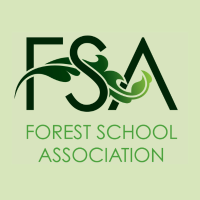
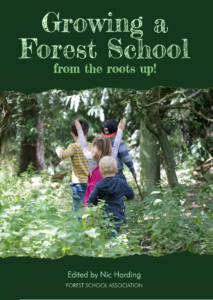
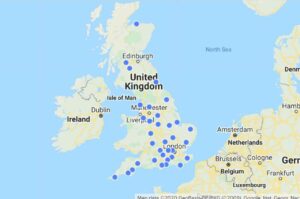
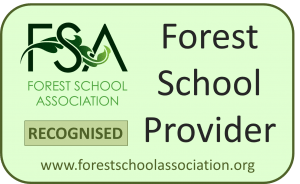
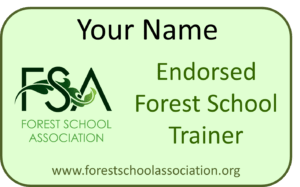
Like Andy, I couldn’t speak too highly enough about this book. I bought it and read it twice almost immediately during my research for my portfolio. I am constantly referring back to the excellent advice and guidance Michael offers. I wish I had done so years before. As a father of a child on the spectrum it made me realise so much more about my son’s condition. I now yearn to have learners with this condition in my groups. We all have so much to gain from their attendance and contributions.
I wholeheartedly agree! The relaxed language the book is written in is very inclusive let alone the points he is making. The repetition, clarity and simplicity of tasks and instructions will benefit all children during Forest School sessions. When I alter my practice for the benefit of a child who shows some parts of the autistic spectrum I often wish I had done it earlier for the whole group, or even used it months or years before with other children in mind. The points about preparation and talking things through before sessions are very good, listening to concerns raised by any child can only be beneficial to everyone involved in their learning.